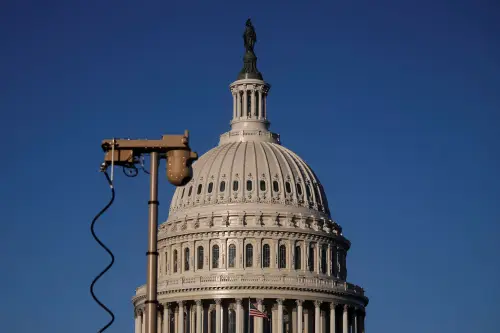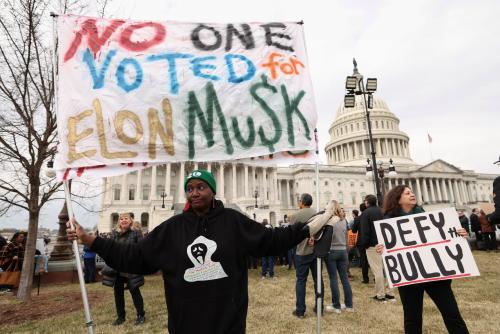A recent advisory from the U.S. Surgeon General Dr. Vivek Murthy warned of the risks of social media usage for youth’s mental health—including sleep deprivation, depression and anxiety. The data that led to this warning comes largely from research linking social media use to outcomes in adolescence. While this is an important and welcome step toward regulating social media, the report also exposes a gap in the literature. Though the data are scant, children under the age of 10 are also actively using social media platforms. They too are engaged in a large natural experiment with relatively unknown consequences.
Young children on social media
According to a 2021 report conducted by Common Sense Media, nearly 40% of children between the ages of 8 and 12 in the United States use traditional social media platforms like Snapchat, Instagram, and Facebook. Because the average child in the U.S. has a smartphone by age 10, it is not surprising that children in primary school are already experimenting with social media content. A survey carried out by the University of Michigan’s C.S. Mott Children’s Hospital reports that even children as young as 7 are themselves in social media apps. Similar data has been reported in surveys across Europe. Less studied still are use patterns of children in the Global South, where 1 in 3 children (ages 3 to 17) are thought to be connected to the internet. Whether they are accessing social media sites or just playing games online is largely unknown.
Knowing how much time children of different ages are spending on these apps is crucial to understanding its impact for children across the globe. To date, research on this issue is also limited. The Common Sense Media report revealed that nearly 1 in 5 (18%) children in the U.S., ages 8-12, say they use social media “every day.” It also found that on average, 8- to 12-year-olds use about five and a half hours of screen media per day, though it’s unclear how much of that time is spent on social media and how much of this is weighted towards younger or older children in this age range. Indeed, research in this area should use smaller age bands as is the practice in the rest of developmental psychology to truly reflect the state of social media use. Eight-year-olds are very different learners and users than are students who are entering puberty. The existing evidence—even with its limits—strongly emphasizes the need to broaden the conversation and address the impact of social media on the world’s youngest users.
Virtual world platforms like Roblox and Minecraft, increasingly popular among early-elementary school children, have chat features that can expose young children to strong language, bullying, hate speech, and even predators. Roblox reports that 25% of its 202 million users are under the age of 9. While a combination of parental controls, content moderators, and language filters (which are more strict for children 13 and under) are in place, these companies have not reported whether these social media features are being used by younger children.
The bottom line is that young children around the world are exposed to and are using social media well before adolescence and this number is growing. The challenge, as always, is in maximizing opportunities for education and connection while minimizing harm and this is especially important for younger children.
Next steps
Research on the influence of social media on children 10 and under is urgently needed to shed light on the potential benefits and detriments and to shape policy in the U.S., Europe, and the Global South. The research should explore factors such as screen time, content consumption, the potential positive and negative impacts of social media use for this age range and, importantly, how early social media use factors into habits for later social media use across geographic contexts and across cultures. It must also be sensitive to the fact that impacts on younger children who are navigating their prowess as learners and as partners in social friendships might be very different than they are for adolescents who are working to secure their identity.
As the BBC noted in a recent article, the use of social media by children in primary school reflects the old adage: Kids are getting older younger (KGOY). Because, young children are increasingly finding ways to access technology, research-backed evidence must provide the backdrop for our policies.
Yes, the U.S. surgeon general’s report was an important first step in exploring the dangers of social media, especially for teenagers in the Global North where the research is currently focused. It is time to acknowledge, however, that social media use is not merely a problem for teens, but might also be problematic for young children who are just forming their digital habits. Until more research is available particularaly for younger children (under 10), nations might consider putting regulations in place that take a preventive approach as they are doing in Europe with their EU Policies to promote children’s online safety and well being, an approach manifest in their 2023 white paper. As in the literature on artificial intelligence, when we know so little about the consequence of a digital space, regulation that limits social media exposure for young children would be a valuable addition to the surgeon general’s recommendations.
The Brookings Institution is committed to quality, independence, and impact.
We are supported by a diverse array of funders. In line with our values and policies, each Brookings publication represents the sole views of its author(s).







Commentary
An addendum to the surgeon general’s advisory on social media
More research is needed on impacts for children under 10
July 18, 2023